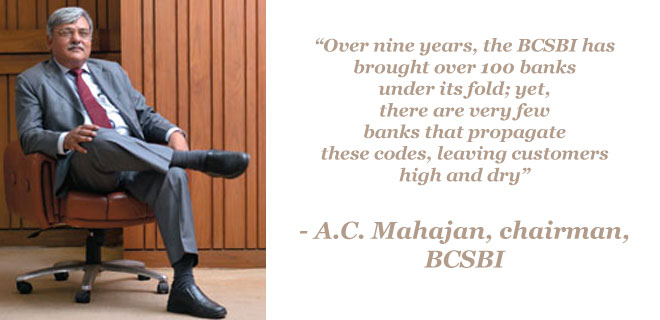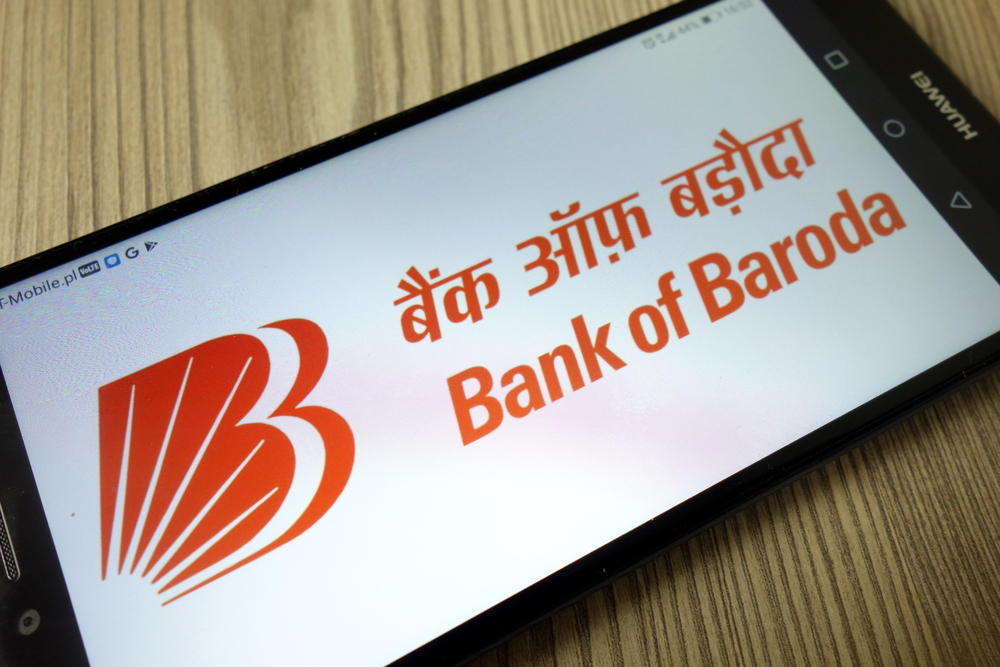Decoding Customer Rights
A.C. Mahajan explains what customers need to know of their rights when dealing with banks

In an interview with Outlook Money, A.C. Mahajan, chairman, BCSBI, shares his views on what customers need to know of their rights when dealing with banks, and more. Excerpts:
Why is there so less awareness about the BCSBI?
The BCSBI was set up by the Reserve Bank of India (RBI) in February 2006. There are 130 banks, as on date, which have voluntarily opted for the membership of BCSBI. Such a large number of banks being members of BCSBI indicates that these banks’ management are committed to the Codes and Standards evolved by BCSBI. However, in our view, banks have, due to reasons best known to them, not been actively publicising their commitments under the codes.
This lack of publicity by banks leads to lack of awareness about BCSBI and codes among bank staff at the ground level and, bank customers in general. Our experience tells us that customers have a general tendency to get their bank-related work done quickly without first making themselves aware of the essential features and the important terms and conditions of the product or service which they are availing.
To give an example, if a customer wants to open a savings bank account, he approaches his bank branch, fills up the application form and submits it along with the required KYC (know your customer) documents. At this stage, the person should have normally enquired and apprised himself about the features of the account, such as minimum balance requirement, penalty for non-maintenance of minimum balance, charges for operations in the account, cheque book charges, nomination facility and, applicability of TDS on interest. However, it never happens. This attitude on the part of customers is reflected in other bank products and services also, such as cheque collection, debit/ATM card/credit card, retail loans and, Internet banking. This lack of awareness leads to customer grievances and complaints when banks behave differently while providing services to the customers.
In what ways does BCSBI protect bank customers? Can you share some examples?
BCSBI is not a forum for redressal of individual grievances. It has been established with the objective of promoting good and fair banking practices. It sets out minimum benchmark standards for banks to act fairly and reasonably in their dealings with customers. The codes, which have been issued by BCSBI and adopted by member banks, contain these minimum benchmark standards which banks are committed to follow.
The codes lay great emphasis on transparency and providing full information to the customer before a product or service is sold. The codes contain the rights and duties of the customers. The codes also contain a number of dos and don’ts for banks to follow, designed to protect the interests of the customers while dealing with them. For instance, banks are required to place their Tariff Schedule (fees and charges for their products and services) on their website and also make them available at their branches. If they increase any of these charges, banks have to notify their customers of the revision one month in advance.
BCSBI has over time resolved certain systemic issues, based on examination of customer complaints. For instance, the practice followed by a bank of not returning the blank cheques obtained as security for the loan after repayment in full, but asking the customer to issue stop payment orders therefore and levying charges for the same, was discontinued. In another case, banks have been made to refrain from cross-selling of products like insurance, top-up loan and enhancement in credit card limit without customers’ express consent. Similarly, banks have been made to stop the practice of hiking the rate of interest on existing loan when a top-up loan is granted without prior disclosure to customer. These are a few examples, where corrections in the systemic irregularities were done by banks.
What do the banking codes stipulate?
The codes contain minimum benchmark standards which banks are committed to follow in their dealings with customers. The codes lay great emphasis on transparency and providing full information to the customer before a product or service is sold to him. The objective is to ensure that bank customers are able to take informed decisions based on prior knowledge. These codes contain the rights and duties of the customers. These rights and duties concern deposit accounts, cheque collection, ATM/debit and credit cards and lending, in addition to areas of financial inclusion, senior citizens and differently-abled persons and, grievance redressal.

What are a bank customer’s rights?
The codes clearly stipulate the customers’ rights by making banks commit that they will not discriminate against any customer on the basis of age, race, gender, marital status, religion, disability, or, financial status. The customers’ rights are in regard to transparency and fairness in banks’ dealing with them. This transparency and fairness implies that banks have committed to make full disclosure about a product or service, before it is provided to the customer. Banks should be reasonable in their dealings with customers. In case there is any deficiency in a bank’s customer service, the bank should provide compensation for the deficiency without the customer asking for it. The rights also include grievance redressal. BCSBI codes have adequately envisaged these rights.
What role does the bank play to ensure that the rights are guaranteed?
Once member banks have adopted the codes, it is their commitment to follow the minimum benchmark standards contained in the codes, while dealing with customers. In order to ensure that the codes are strictly followed, their copies are required to be made available in branches for perusal by customers. If customers so desire, banks are required to give copies of the codes to customers. So that customers are aware of this facility, banks are also required to display the availability of these on the notice boards and on their website.
Where does BCSBI step-in in case of dispute?
For that purpose, a well-evolved system is already in place. The grievance redressal system which banks have committed to follow through the codes, clearly stipulates that banks would provide information about the relative procedure. At first stage, the dispute may be taken up at the branch level itself.
If not satisfied, the customer may escalate the dispute to higher authorities. If still unsatisfied, the customer can take up the matter with the office of the Banking Ombudsman (BO) concerned. As per the codes, contact details of the officials concerned, as also those of the office of the BO, are required to be displayed at the branches.
On reference of the grievance to the BO, the complaint is examined in detail and an award is issued by the BO in favour of the customer for any violation of code provisions. Non-compliance with the codes is one of the grounds covered under the BO scheme.
As for BCSBI, it examines customer complaints to see whether any systemic issue is involved and, if so, the matter is taken up with banks concerned and thereafter, if necessary, suitable guidelines are issued.
How can one ensure that banks are spreading awareness of customer rights?
Banks have been organising customers’ meets to spread awareness of customers’ rights. BCSBI often participates in these meets. In addition, BCSBI has been making efforts through interaction with top management of banks for improvement in their system for implementation of codes, participating in public forums for creating awareness about codes, and providing support to banks for inculcating awareness about codes among their staff and customers.
BCSBI has also been conducting survey of bank branches on a sample basis. Last year, the branch survey findings were also utilised for rating of banks into four categories: high level of compliance, above average level of compliance, average level of compliance and below average level of compliance. These ratings along with branch survey findings were shared with the CMD or CEO of banks for taking necessary corrective action. BCSBI is hopeful that these efforts would bring forth the desired results.









